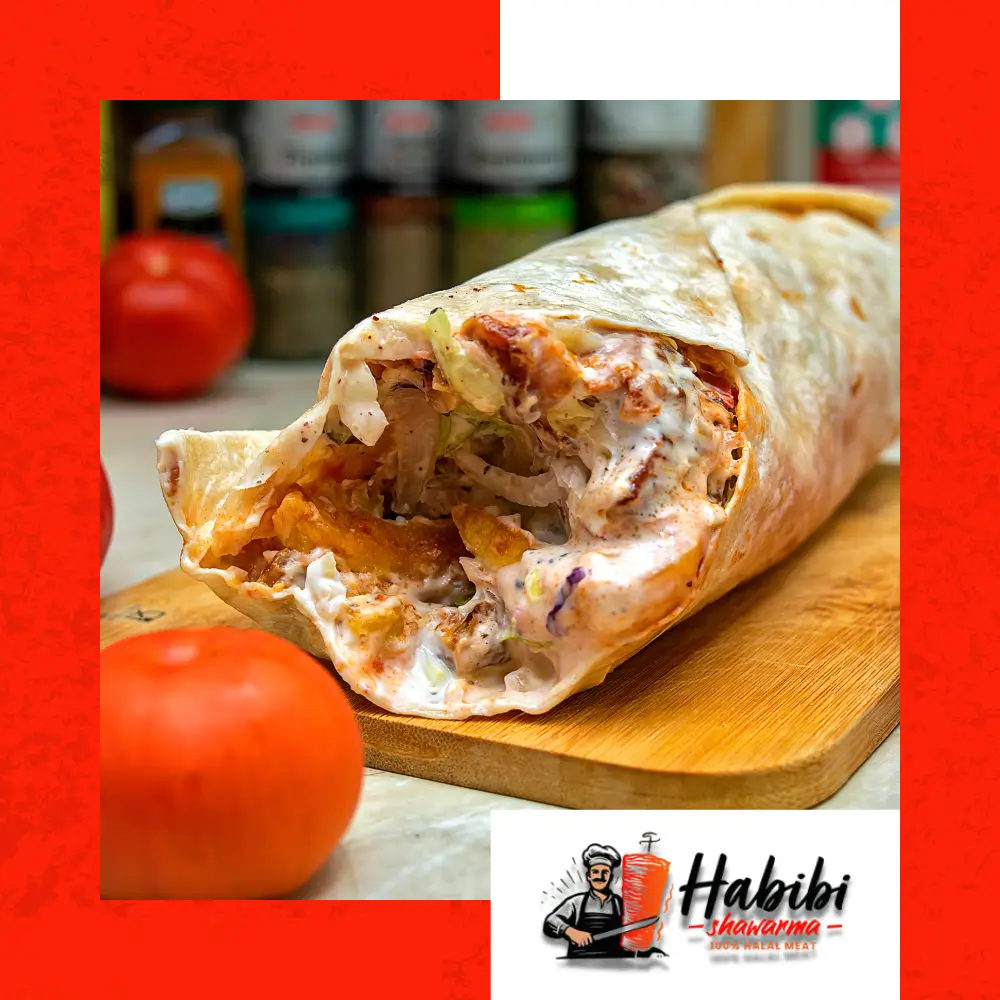Shawarma is a well-loved dish, known for its aromatic spices, tender grilled meat, and delicious accompaniments. Often associated with Middle Eastern and Mediterranean cuisine, shawarma is a versatile meal that can be both flavorful and healthy when prepared correctly. But how does Mediterranean shawarma retain its rich taste while maintaining its nutritional value?
Healthy Ingredients That Make a Difference
One of the secrets behind nutritious Mediterranean shawarma lies in the choice of ingredients. Using high-quality, whole foods enhances both flavor and health benefits. Key elements include:
- Lean Proteins: Traditional shawarma uses lamb, chicken, or beef, but opting for lean cuts of meat or even plant-based proteins like grilled tofu can reduce excess saturated fats.
- Healthy Marinades: A blend of olive oil, garlic, lemon juice, and spices such as cumin and paprika creates an antioxidant-rich marinade that enhances taste without unhealthy additives.
- Whole Grains: Replacing white pita bread with whole wheat pita or serving shawarma over quinoa or brown rice increases fiber content and improves digestion.
- Fresh Vegetables: Adding a variety of fresh greens, tomatoes, cucumbers, and onions boosts vitamins, minerals, and antioxidants in the dish.
- Wholesome Sauces: Instead of high-fat mayo-based dressings, Mediterranean shawarma often includes tahini, hummus, or yogurt-based tzatziki, which provide beneficial probiotics and healthy fats.
Cooking Techniques That Preserve Nutrition
Traditional shawarma is cooked on a vertical rotisserie, allowing excess fat to drip away while sealing in moisture and flavor. To make shawarma even healthier:
- Grilling instead of frying prevents excess oil absorption while keeping the meat tender and smoky.
- Slow roasting enhances flavor without requiring unhealthy cooking fats.
- Using olive oil sparingly in marinades and cooking helps retain heart-healthy benefits without excess calories.
Why Mediterranean Shawarma is a Smart Choice
Mediterranean shawarma aligns well with the principles of the Mediterranean diet, which emphasizes whole foods, healthy fats, and balanced nutrition. It is a great source of:
- High-quality protein for muscle maintenance and satiety.
- Essential vitamins and minerals from fresh herbs, vegetables, and lean meats.
- Heart-healthy fats from olive oil, tahini, and nuts.
- Fiber from whole grains and vegetables, which supports digestion and gut health.
How to Enjoy Shawarma Without Compromising Health
To enjoy Mediterranean shawarma in the healthiest way possible:
- Choose whole wheat pita or a salad base instead of refined flour wraps.
- Use yogurt-based sauces instead of heavy, high-fat dressings.
- Fill your plate with colorful, nutrient-dense vegetables.
- Portion control is key—moderation ensures you get the benefits without overindulging.
Final Thoughts
Mediterranean shawarma proves that healthy eating doesn’t have to sacrifice flavor. By focusing on lean proteins, wholesome marinades, fresh vegetables, and traditional Mediterranean cooking techniques, this iconic dish can be a nutritious and delicious part of a balanced diet. Whether served in a wrap, on a platter, or over a fresh salad, shawarma remains a beloved meal that offers both taste and wellness in every bite.

